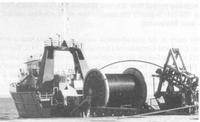


Chapter 9
I Introduction
II The Australian Chemical Industry
III Pharmaceuticals
IV Chemists In Other Industries
V The Dawn Of Modern Chemical Industry - High Pressure Synthesis
VI The Growth Of Synthetic Chemicals - Concentration, Rationalisation And International Links
VII Australian Industrial Chemical Research Laboratories
VIII The Plastics Industry
i Plastics processing
ii Phenol - basis of the first plastic
iii Plastics - the first generation
iv Plastics - the second generation - from petrochemicals
v Styrene monomer - the West Footscray petrochemical complex
vi The Botany petrochemical complex
vii The petrochemical complex at Altona
viii CSR - from sugar alcohol to petrochemical OXO alcohol
IX The Paint Industry
X Acknowledgements
References
Index
Search
Help
Contact us

In Germany, K. H. Ziegler had invented (1954) an ingenious low pressure/low temperature process which did not suffer from the inherent thermodynamic (energy) and engineering handicap of ICI's high pressure/high temperature process and which produced a new, denser variant of the polymer. ICI's original invention of polythene -a discovery resulting from a study of high pressure gas reactions by R. 0. Gibson and F. W. Fawcet -had been patented in 1933. Its further development, almost a re-discovery, took considerable time and was typical of interdisciplinary team R&D between chemists (J. C. Swallow and M. Perrin), thermodynamicists (A. Michels) and, importantly, engineers (W. R. D. Manning and L. Mills) (for case history see Reader).[118]
If ICI Australia was to benefit from patent protection during the difficult early years of manufacture, there was no time to be lost in the mid fifties. ICI Australia sought, and obtained, an extension of the basic patent on the basis of profits lost during the war years. There was, however, no adequate petrochemical source of ethylene available in Australia at the time. Initially, the only expensive alternative was to produce it by 'cracking' (dehydration) of ethanol. Later ethylene became available from the Shell refinery, but the quantities available did not match the rate of polythene growth. Yet the decision to enter the field had to be made. In 1957, ICI brought the first polythene plant on line. It was a complex continuous polymerisation of a highly explosive gas, ethylene, at 200 atmospheres and 200°C with recycle systems, high pressure compressors, valves, and reactors, and extraordinary safety precautions. Yet, the process came on line on time, within specification and close to cost estimates.
While the launch of polythene itself was essentially a feat of technology transfer and engineering, the preparation of the market involved substantial research and technical service. Thus e.g. polythene film made by overseas formulations did not stand up to Australian ultraviolet irradiation; UV absorbent additives had to be invented and developed as well as formulations for plastic pipes, and a variety of polythene grades for different purposes (Fig. 25). Much of this work was done on imported polymer, in preparation of the market. Once these grades were established, they had to be matched by the local plant. Operating conditions of the continuous reactor had to be defined for grade after grade -reproducibly. It clearly was a new phase of chemical sophistication.

People in Bright Sparcs - Zeigler, Johann
 |
Australian Academy of Technological Sciences and Engineering |  |
© 1988 Print Edition page 698, Online Edition 2000
Published by Australian Science and Technology Heritage Centre, using the Web Academic Resource Publisher
http://www.austehc.unimelb.edu.au/tia/665.html